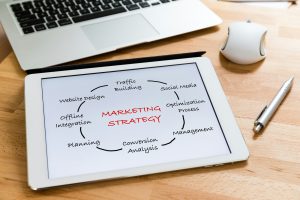In the current digital era, email marketing has emerged as a potent instrument for local enterprises to engage with their target demographic and stimulate sales.
This in-depth guide is designed to lead you through the essential procedures for devising effective email marketing campaigns customized to suit the local market.
Starting from delineating your target audience to crafting visually appealing emails and evaluating campaign efficacy, the guide encompasses a comprehensive range of topics required to enhance your email marketing approach and yield superior outcomes.
The implementation process commences forthwith.
Understanding Email Marketing for Local Businesses
Understanding Email Marketing for Local Businesses is essential for the development of a successful digital marketing campaign that caters to the local market. By incorporating a well-executed email strategy, businesses can effectively interact with their target audience, boost conversion rates, and improve customer relationships.
Targeted email campaigns enable businesses to customize content based on individual customer preferences, thereby increasing the probability of customer engagement. By segmenting their audience and delivering relevant messages, local businesses can establish deeper connections within their market.
Email marketing offers valuable data insights that aid in the optimization of campaigns for enhanced conversion rates. By analyzing metrics such as open rates, click-through rates, and conversion metrics, businesses can adjust their strategies to more effectively reach their specific market segment and drive business growth.
Overview of Email Marketing and its Benefits
An examination of Email Marketing and its Advantages offers insight into how email campaigns can be utilized to target specific audiences, drive engagement, and enhance conversion rates. A comprehensive understanding of the principles of email marketing forms the basis for successful campaigns.
Through the utilization of email marketing, organizations can customize their messages to resonate with various segments of their subscriber base, ensuring the delivery of relevant content. This degree of personalization fosters increased audience engagement, as subscribers feel appreciated and understood. Well-executed email campaigns have the capacity to cultivate customer relationships over time, fostering trust and brand loyalty. The capability to monitor user behavior and preferences using email analytics enables organizations to continuously refine their strategies, leading to improved conversion rates and sustained customer retention.
Defining Your Target Audience
Defining the target audience is a crucial step in developing customized email content that resonates with the recipients. Through audience segmentation and customization of content based on their preferences, businesses can effectively improve engagement levels and drive conversions.
Segmentation involves categorizing the subscriber list into specific groups based on demographics, behaviors, or preferences. This approach allows for the creation of tailored messages that cater to the distinct needs and interests of each segment, thereby enhancing the relevance and engagement of the emails.
By comprehending the unique characteristics of the audience segments, businesses can deliver content that directly addresses their interests, thereby increasing the likelihood of conversions. Personalization plays a pivotal role in email marketing by fostering a deeper connection with recipients and motivating them to take action in accordance with their individual preferences.
Identifying Your Local Market
It is crucial for local businesses to identify their local market when aiming to engage with their community through targeted email campaigns. This involves gaining a comprehensive understanding of the subtleties of the local market to effectively tailor strategies.
By diving into the specific preferences and requirements of the local audience, businesses can develop more personalized content that resonates with recipients. This personalized approach fosters trust and nurtures stronger relationships, thereby enhancing engagement and conversions.
Through customer segmentation based on local demographics and behaviors, businesses can ensure that their email marketing endeavors are precisely targeted and yield more favorable outcomes within the local context. Employing localized targeting strategies not only heightens the relevance of content but also amplifies the overall impact of email campaigns in the local business landscape.
Creating Compelling Email Content
Crafting compelling email content involves the meticulous creation of visually appealing designs, strategic call-to-action elements, and engaging copy that stimulates user interaction. The presentation of a well-structured email with captivating content can notably enhance open and click-through rates.
To enrich the user experience, it is imperative to ensure that the email design is mobile-responsive since a significant percentage of users access emails through their smartphones. Employing A/B testing strategies can help in identifying the most effective subject lines, images, and layouts. The integration of clear and concise call-to-action buttons is recommended to direct recipients towards the desired action.
Incorporating various engaging copywriting techniques such as personalization, storytelling, and the creation of a sense of urgency can effectively captivate the audience. It is essential to bear in mind that the cornerstone of successful email marketing lies in providing value and relevance to subscribers.
Tips for Writing Effective Emails
Guidelines for composing effective emails center on improving email copy, creating engaging subject lines, and boosting user engagement. By optimizing the content of emails for readability and relevance, organizations can enhance open rates and stimulate audience interaction.
A critical factor to consider when formulating email subject lines is the utilization of personalization. Incorporating the recipient’s name or referencing past interactions can enhance the relevance of the email and raise the probability of it being opened. Introducing a sense of urgency or exclusivity in the subject line can create curiosity and spur immediate action.
Regarding the body of the email, using concise and persuasive language is essential. Employing bullet points, subheadings, and clear calls-to-action can effectively lead readers through the content and prompt engagement.
Designing Eye-Catching Emails
The creation of visually appealing email templates, designed to be optimized for various devices and screen sizes, is crucial in crafting Eye-Catching Emails. The integration of responsive design elements and the utilization of pre-designed templates can significantly improve the overall aesthetic and functionality of email campaigns.
By ensuring that email layouts are responsive to different screen sizes, a seamless viewing experience for recipients is guaranteed, irrespective of the device they are using. The use of mobile-responsive designs is particularly vital in the contemporary digital landscape, where a substantial portion of email opens transpire on mobile devices. Incorporating engaging visuals, concise content, and clear call-to-action buttons can further captivate the attention of the audience and stimulate interaction with the emails.
Best Practices for Email Design
The implementation of Best Practices for Email Design involves the optimization of visual elements, layout structure, and performance metrics with the aim of enhancing the effectiveness of email campaigns. By adhering to these design best practices, businesses can significantly enhance engagement levels and overall campaign performance.
These practices encompass the utilization of visually appealing and mobile-responsive email templates to ensure compatibility across various devices. Additionally, strategically placing call-to-action buttons within emails can lead to an increase in click-through rates. It is imperative to track performance metrics such as open rates, click-through rates, and conversion rates in order to evaluate the success of email campaigns and establish data-driven strategies for optimization. Design elements including appealing imagery, concise yet compelling copy, and personalized content are crucial in capturing recipients’ attention, consequently resulting in higher open rates and improved user engagement.
Building and Growing Your Email List
The process of constructing and expanding an Email List is a fundamental component of email marketing, critical for lead acquisition, customer loyalty, and audience proliferation. By deploying effective strategies, organizations can enrich their pool of subscribers and cultivate enduring customer connections.
One potent method for accelerating the growth of an email list is to provide valuable incentives to visitors of a website in exchange for their email addresses. This may encompass offering exclusive access to content, discounts, or complimentary resources that resonate with the intended audience.
Enhancing the functionality of sign-up forms across various touchpoints on a website can streamline the subscription process for visitors. Once a robust subscriber database is established, sustaining engagement becomes imperative. Personalizing email communications, segmenting the audience according to their interactions, and dispatching pertinent content can enhance both open rates and click-through rates.
Strategies for Increasing Subscribers
The strategies for increasing subscribers encompass the implementation of lead generation tactics, optimization of email frequency, and strategic scheduling to attract and retain a loyal subscriber base. Diversifying acquisition strategies enables businesses to effectively expand their reach.
Determining the optimal email frequency is paramount in striking a balance between maintaining a presence in subscribers’ inboxes and avoiding overwhelming them. Consistency in email sending is crucial, yet it is equally important to monitor engagement metrics to make adjustments to the frequency as needed. Strategic scheduling plays a significant role in ensuring that emails reach recipients at the most opportune times for maximum impact. By analyzing subscriber behavior and preferences, businesses can tailor their email campaigns to sustain interest and prevent subscriber fatigue.
Measuring the Success of Your Email Campaign
The evaluation of the effectiveness of an Email Campaign relies on the measurement of key performance indicators (KPIs), campaign performance metrics, and data insights. Through the utilization of analytics, businesses can refine their strategies to achieve improved outcomes.
Monitoring KPIs such as open rates, click-through rates, conversion rates, and subscriber growth offers valuable insights into the engagement levels of email recipients. The analysis of campaign performance metrics like delivery rates and bounce rates is essential for pinpointing areas requiring enhancement and ensuring the accurate targeting of the intended audience.
Conducting data-driven analysis facilitates an understanding of customer behavior, preferences, and trends, enabling the customization of email content to enhance relevance and engagement. By interpreting analytics data with precision, informed decisions can be made regarding audience segmentation, optimization of send times, and personalization of content to enhance engagement levels and conversions within email campaigns.
Key Metrics to Track and Analyze
It is essential for businesses to track and analyze key metrics such as Return on Investment (ROI), email engagement metrics, and overall campaign performance indicators. Through the monitoring and interpretation of these metrics, businesses can evaluate the effectiveness of their email marketing initiatives and refine their strategies to achieve optimal results.
Calculating ROI is critical in assessing the profitability of email campaigns, as it enables companies to determine the financial returns derived from their investments in email marketing. Additionally, email engagement rates offer valuable insights into how recipients interact with the content, allowing businesses to assess the effectiveness of their messaging and call-to-action strategies.
A thorough examination of these key performance indicators allows businesses to identify trends, patterns, and preferences among their target audience. This deep dive enables targeted adjustments to enhance overall campaign performance and drive higher conversion rates.
Improving Your Email Marketing Strategy
Enhancing one’s Email Marketing Strategy entails optimizing campaign workflows, integrating email automation tools, and soliciting customer feedback to facilitate ongoing improvements. By honing strategies through analysis and feedback, organizations can foster heightened engagement and outcomes.
This method not only aids in comprehending customer inclinations but also facilitates large-scale personalization. Automation tools allow for audience segmentation to deliver tailored messages, thereby boosting the significance of email communications. Utilizing customer feedback aids in pinpointing pain points and areas necessitating enhancement, ultimately fostering more robust connections with the target audience. Continuous refinement based on customer input is imperative for maintaining a competitive edge in the perpetually evolving realm of email marketing, securing enduring success in the foreseeable future.
Optimizing for Better Results
Optimizing for enhanced performance in email campaigns involves implementing strategies such as leveraging email automation, improving deliverability rates, and avoiding spam filters. By optimizing email processes and ensuring high inbox placement, businesses can effectively expand their reach and maximize the impact of their marketing efforts.
The integration of efficient email automation sequences can streamline marketing activities and facilitate timely, personalized communication with the target audience. Utilizing tools like automated welcome series and tailored product recommendations can help nurture customer relationships and drive higher conversion rates.
Moreover, adhering to deliverability best practices, such as regular email list maintenance, domain authentication, and optimizing email content for engagement, can significantly enhance email deliverability rates. The attainment of high deliverability rates is imperative for campaign success, as it influences whether messages are successfully delivered to recipients’ inboxes or inadvertently flagged as spam.
Frequently Asked Questions
What are effective email marketing campaigns for local businesses?
Effective email marketing campaigns for local businesses are targeted, timely, and relevant email communications sent to a specific audience in a local area. These campaigns are designed to promote products, services, or special offers and drive conversions for local businesses.
How can I create an effective email marketing campaign for my local business?
To create an effective email marketing campaign for your local business, you should start by identifying your target audience, setting clear goals, and creating valuable content that resonates with your audience. You should also make sure to personalize your emails, use eye-catching subject lines, and track and analyze your campaign results to make improvements.
What are the benefits of using effective email marketing campaigns for local businesses?
Effective email marketing campaigns can have several benefits for local businesses, including increased brand awareness, improved customer engagement and loyalty, higher conversion rates, and a better return on investment. They also allow businesses to communicate directly with their target audience and build a strong customer base in their local area.
What types of emails should I include in my effective email marketing campaign for my local business?
There are several types of emails that can be included in an effective email marketing campaign for local businesses, such as promotional emails, newsletters, event invitations, welcome emails, and customer feedback emails. It is important to mix and match these types of emails to keep your audience engaged and interested.
How often should I send emails as part of my effective email marketing campaign for my local business?
The frequency of your email sends will depend on your specific business and target audience. It is important to find a balance between sending enough emails to stay top of mind, but not sending so many that your audience feels overwhelmed or annoyed. A good rule of thumb is to send at least one email per month, but no more than one per week.
What are some best practices for creating effective email marketing campaigns for local businesses?
Some best practices for creating effective email marketing campaigns for local businesses include segmenting your email list, using clear and concise messaging, including a call-to-action in every email, optimizing your emails for mobile devices, and regularly testing and refining your email campaigns. It is also important to comply with email marketing laws and regulations to avoid any legal issues.




